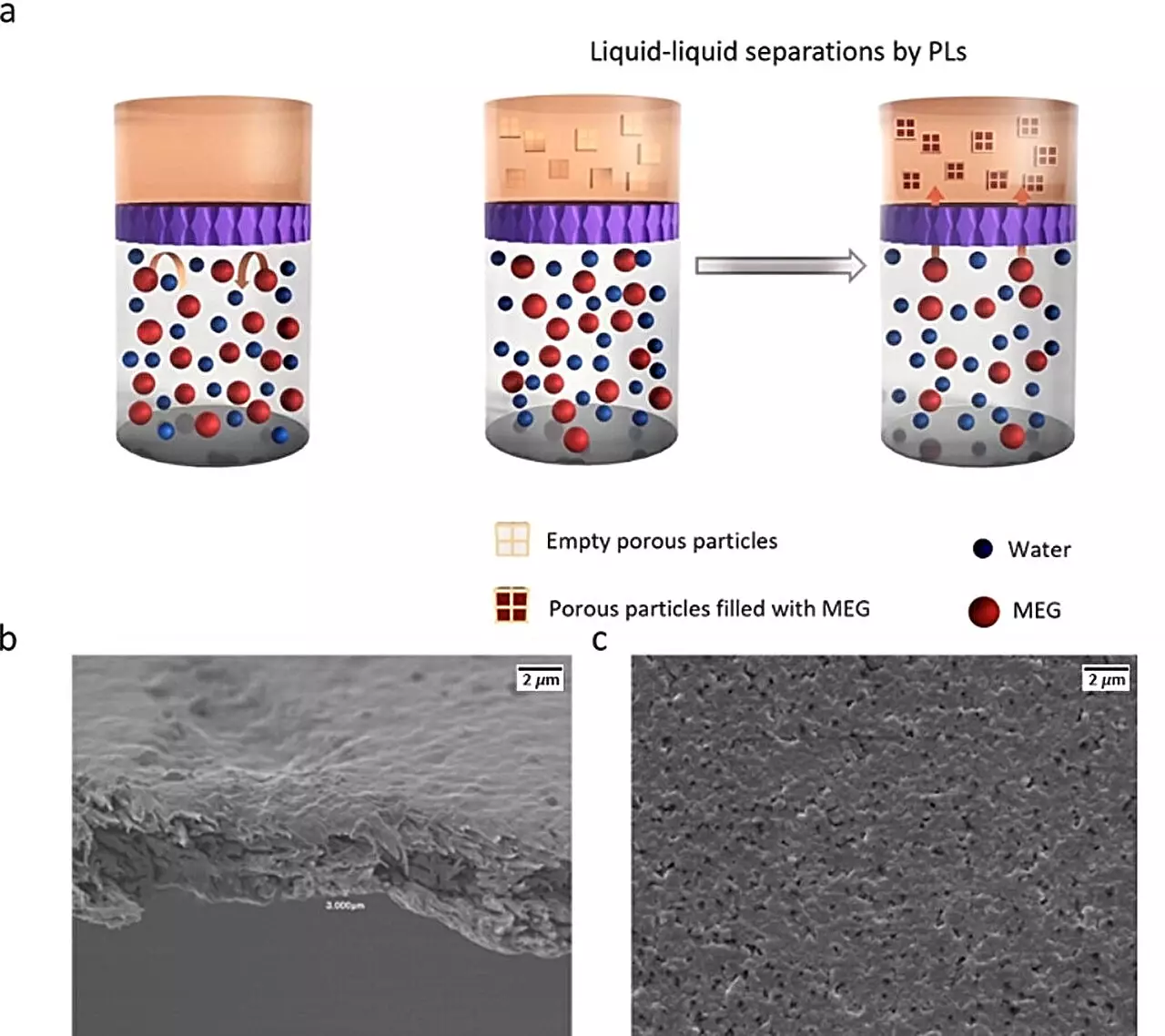In a groundbreaking study that illuminates new pathways for environmental sustainability and public health, researchers from the University of Birmingham and Queen’s University Belfast have successfully employed porous liquids (PLs) for an innovative application: the separation of liquid mixtures. This monumental work, detailed in the journal *Angewandte Chemie International Edition*, marks a first in liquid-liquid extraction, showcasing porous liquids as a tool for solving pressing ecological issues.
Porous liquids, characterized by their inherent capacity to contain permanent voids within their structures, have emerged as a compelling solution in a notable case involving the aeronautical sector. The challenge at hand pertains to monoethylene glycol (MEG), a common yet environmentally detrimental de-icing agent. Typically utilized in aviation to prevent ice formation, the resultant MEG-water mixture poses a serious ecological threat, particularly to aquatic ecosystems due to harmful waste run-off.
The research indicates that Type 3 porous liquids can effectively sequester MEG, achieving a remarkable absorption rate that occupies up to 88% of the liquid’s pore volume while leaving water predominantly untouched. This capability presents an effective avenue to manage and mitigate the risks posed by harmful waste, with researchers highlighting the pressing need for actionable solutions in contexts where MEG mixtures are simply stored in large tanks, awaiting a viable disposal method.
As the study’s lead researcher, Assistant Professor Deborah Crawford, remarked, this process provides a transformative approach to tackling hazardous waste management, integrating scientific innovation with eco-conscious practices. The findings inspire optimism across various sectors, leading scholars to further explore the applicability of porous liquids outside of aeronautics.
In addition to environmental implications, the study further explored exciting applications within the food and beverage industries. The researchers ingeniously demonstrated that a specific non-toxic and pH-resistant porous liquid could efficiently reduce the alcohol content in traditional beverages like wine and gin without compromising their flavor integrity. This development is particularly pertinent in light of increasing consumer demand for low-alcohol alternatives that maintain the sensory experiences of their alcoholic counterparts.
This newfound capability to craft low-alcohol beverages while preserving flavor profiles signals a potential disruption in the market, addressing a crucial gap that many brands currently struggle to fill. The implications of such advancements cannot be overstated, particularly as the consumer landscape increasingly trends towards healthier lifestyle choices.
The exploration and successful application of porous liquids represent a pivotal step forward in various domains, from environmental protection to culinary innovation. While these findings create a foundation for sustainability initiatives and align with public health movements, they also call for further research and development to fully realize their potential. By reconceptualizing waste management and beverage production through the lens of porous liquids, researchers are not just unveiling a novel scientific achievement; they are paving the way for responsible practices that can benefit both industries and society at large.


Leave a Reply